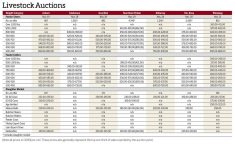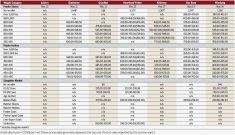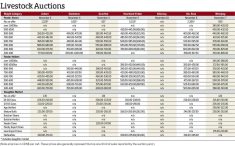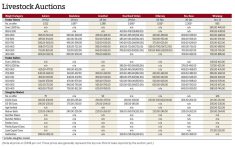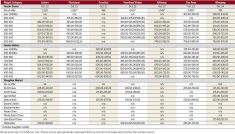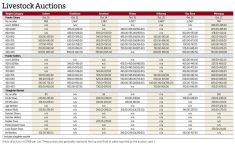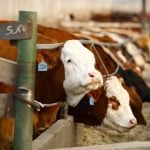The amount of cattle heading to Manitoba’s eight auction facilities continued to remain strong for the week of Feb. 10-16, with a total of 11,079 head. Last week, 7,105 were sold based on figures from seven reporting auctions.
The largest week-to-week increase was for the Grunthal Auction Mart, jumping from 243 at their Feb. 7 sale to 1,974 this week. As well, volume at Heartland Livestock Service’s Virden facility ballooned from 996 head on Feb. 9 to 2,611 on Feb. 15.
The numbers are likely to remain fairly good, albeit a dip is common during the second half of March, according to Scott Anderson of Winnipeg Livestock Sales. Winnipeg’s sale drew in 590 head on Feb. 3 but rose to 1,205 on Feb. 10.
Read Also
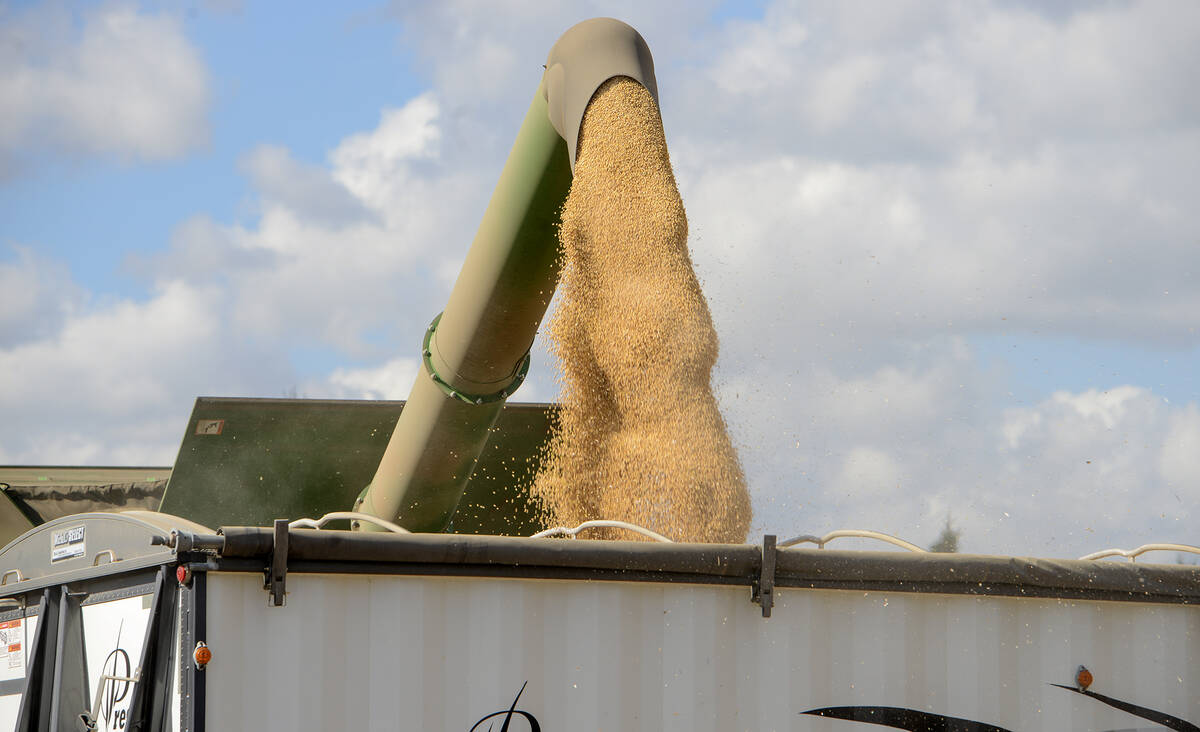
Grain markets hungry for U.S. data
The U.S. government shutdown meant that futures markets were left without robust grain supply information
“We did have a couple of smaller sales [recently], but those were mostly due to bad weather,” Anderson said, noting one receiving day experienced about -30 C and with strong winds.
Other than that blip, Anderson said cattle flowing into auctions should remain strong for the next three to four weeks.
“Typically, a lot of the calves that have been weaned prior to Christmas, they often run out by the last week or two of March. But after that we start getting into the fall calves,” he added, noting those calves by then will be about 500 to 600 lbs.
“You almost hit a second wave of cattle,” Anderson said.
Once April rolls around, the numbers traditionally rise with that influx of fall calves.
One factor that may have something of an effect on the cattle coming in would be annual spring road restrictions. However, Anderson stressed the restrictions tend to affect those trucks hauling cattle between auctions; cattle brought in by producers aren’t affected as much. That said, he noted there can be issues with restrictions with areas of the province such as the Lake Manitoba Narrows on Highway 68.
Demand for Manitoba cattle has been from Eastern Canada and locally, Anderson said.
“A lot of them are staying on feed in Manitoba or nearby until they’re grown out a little bit before they go on hard feed,” he said.
As the feeder market remains very strong, Anderson said the slaughter market is “creeping up.” There are a lot of bred cattle still coming to the auctions just as prices for feeders are at or near all-time highs.




